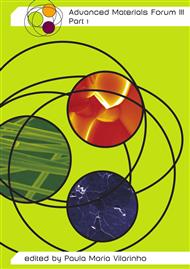p.702
p.707
p.712
p.718
p.723
p.729
p.734
p.739
p.744
Laser Cladding of Ni Based Cermets
Abstract:
The self fluxing NiCrBSi alloys can produce coating layers by means of laser processing techniques. Main procedures are the laser post-treatment of previously thermal or plasma sprayed coats and the laser cladding, for which preplaced or continuously delivered powder (in this case aided by powder feeders) can be used. NiCrBSi alloys have an interesting property due to the presence of boron and silicon in its composition: they exhibit a relatively low melting point, making the laser cladding process easier. The layers obtained on metallic based materials are resistant to high temperature erosion wear and corrosion. However, if additional abrasive wear resistance is needed, the feeding with ceramic powders such as tungsten carbides (WC) is required. The high melting point of ceramics makes the laser cladding process complicated as the melt pool is made up of liquid metal plus not totally melted ceramic particles and the whole suffers the effect of the shielding and carrying gas flows, producing undesired instabilities. In this paper several combination of WC and NiCrBSi powders were tested. It is shown that the WC fraction in the mixture has a major influence on the obtention of pore and crack free clad layers. Bellow a certain ratio the meltpool appears to be more stable and less affected by the different gas flows used in the process, yielding dense NiCrBSi coatings with rather evenly distributed WC particles. In these conditions, the analysis and characterization of the produced coatings shows that the microstructure gains homogeneity without decreasing too much microhardness if compared with the pure ceramic layers.
Info:
Periodical:
Pages:
723-728
Citation:
Online since:
May 2006
Keywords:
Price:
Сopyright:
© 2006 Trans Tech Publications Ltd. All Rights Reserved
Share:
Citation:


